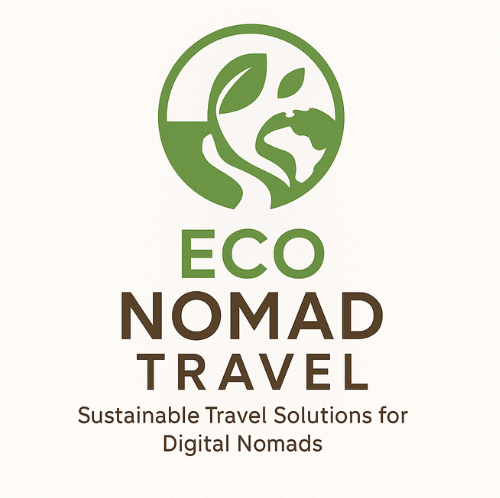What Is Ecotourism? The 2025 Guide to Sustainable Exploration

Ecotourism Sustainable Travel Community Tourism Digital Nomads
Some links below are affiliate — purchases may earn a small commission at no extra cost to you.
Understanding Ecotourism in 2025
Ecotourism in 2025 has matured from a niche buzzword into a global movement. It’s the practice of traveling responsibly to natural areas that conserve the environment, sustain the well-being of local people, and involve meaningful interpretation and education. Modern eco-travelers aren’t just sightseers; they’re participants in the restoration of fragile ecosystems and the empowerment of communities that protect them.
Imagine trekking through Costa Rica’s cloud forests led by local guides, or joining a marine biologist to monitor coral health in the Philippines. Each trip is a micro-partnership between traveler and place—an exchange built on respect and education. To see how eco-travel differs from mass tourism, read our upcoming guide Ecotourism vs Regular Tourism: What’s the Difference?
Key Takeaways
- Ecotourism in 2025 focuses on conservation, community, and education.
- Responsible travel choices directly support local economies and biodiversity.
- Digital tools make it easier to verify and plan sustainable trips worldwide.
- Every traveler can help reduce emissions and empower communities through mindful choices.
Core Principles of Ecotourism
True ecotourism rests on three pillars: conservation, community, and education. Travelers seek to minimize impact and maximize benefit by following a set of practical principles.
- Conservation: Support protected areas and wildlife corridors, choose lodging that uses renewable energy, and avoid disturbing native flora and fauna.
- Community Engagement: Partner with local guides and cooperatives. Projects like those highlighted in Latin America’s Community-Led Eco Tours 2025 show how direct benefits stay within villages.
- Education & Cultural Respect: Participate in interpretive walks and heritage workshops that foster understanding rather than consumption.
For practical habit shifts, see our Low-Impact Travel Habits guide and Carbon-Neutral Travel Guide 2025.
Environmental & Community Benefits
When done right, ecotourism generates a virtuous cycle. Entrance fees fund park management; visitor income supports local crafts and agriculture; education programs reduce poaching and deforestation. Communities from Borneo to Belize are turning tourism into a tool for resilience rather than extraction.
Digital nomads contribute too when they base long-term stays in eco-villages or conservation towns. Working remotely from a solar-powered guesthouse or refilling water bottles at a community station may sound small, but across thousands of travelers it creates a measurable reduction in waste and emissions.
Top Ecotourism Destinations (Preview)
Our upcoming article Top 10 Ecotourism Destinations for 2025 will profile regions where sustainability is woven into daily life—places like Slovenia’s green Alpine villages, Costa Rica’s biodiversity corridors, and Japan’s Yakushima Island. Each offers lessons for balancing access with preservation.
How to Choose Eco-Friendly Tour Operators
Not every “eco” label means responsible. Before booking, look for independent certifications (such as Global Sustainable Tourism Council standards) and transparent impact reports. Small locally-owned operators often outperform large brands in real community benefit. You’ll find a step-by-step checklist in How to Choose Eco-Friendly Tour Operators.
Where possible, book directly with community projects or verified non-profits. Plan routes through ethical aggregators like Trip.com and arrange transfers with Kiwitaxi or Welcome Pickups.
What Makes a Tour Truly Sustainable? Understanding Eco-Friendly Tours in 2025
In 2025, travelers are no longer satisfied with surface-level “green” marketing. They want measurable sustainability. A truly sustainable tour operates on three intertwined pillars — environmental stewardship, cultural integrity, and economic fairness. When these principles align, tourism becomes a regenerative force rather than an extractive one.
Environmentally, this means tours that minimize emissions through low-impact transport, renewable energy, and waste-free logistics. Culturally, it means partnering directly with local communities and respecting traditional knowledge systems rather than packaging them for quick profit. Economically, it ensures fair wages, local ownership, and transparent reinvestment into conservation projects.
Many destinations now require Global Sustainable Tourism Council (GSTC) verification for operators to receive official eco-status. This standardization helps travelers identify legitimate eco-friendly tours and avoid greenwashing. Complementary certifications such as Travelife and Biosphere Tourism also track long-term sustainability metrics — from carbon data to community investment ratios.
Transparency remains the cornerstone. The best operators publish impact reports, measure CO₂ offsets, and share financial contributions to local conservation. Choosing these verified experiences supports both credibility and global accountability, key elements of Google’s EEAT standards. For a deeper dive into these certification systems, explore What Makes a Tour Truly Sustainable? Understanding Eco Friendly Tours in 2025.
Ultimately, sustainability is a mindset — not a marketing badge. It begins with curiosity, continues through informed choices, and ends with respect for place and people. The more travelers demand accountability, the faster the industry shifts toward genuine ecological integrity.
Ecotourism vs Regular Tourism
Traditional tourism treats destinations as commodities; ecotourism treats them as living systems. The difference is intent. Regular tourism often extracts value without restoring it—mass resorts, all-inclusive packages, and imported supplies leak revenue away from locals. Ecotourism invests value back through education, fair wages, and environmental management.
In practice, this means choosing a homestay over a chain hotel, taking a train over a flight (compare emissions here), and packing with our Zero-Waste Nomad Packing Guide.
The Future of Ecotourism in a Digital World
As AI and remote work reshape mobility, ecotourism is entering its most innovative phase. Virtual reality scouting reduces unnecessary site visits (VR & AI Eco Travel Planning 2025), while apps help track personal carbon footprints and offset journeys through verified projects. The goal isn’t to travel less—it’s to travel better.
For a look at regenerative models that actively improve ecosystems, read Eco-Volunteering & Regenerative Travel 2025. And for travelers seeking quiet renewal after digital overload, our Quietcations & Digital Detox Retreats 2025 offer restorative options.
- Trip.com for eco stays & tickets
- Airalo eSIM • Yesim • Saily
- GetRentACar for electric and hybrid options
- Searadar for sailing charters
How Nomads Can Practice Ecotourism Daily
Responsible travel isn’t limited to wilderness treks. It’s also the daily rhythm of how we live abroad. Choosing walkable neighborhoods, refilling water bottles, joining local cleanups, or mentoring young entrepreneurs all count as micro-actions of sustainability. They form a personal ethic rather than a one-time checklist.

Living the Eco Nomad Ethos Beyond Travel
Practicing ecotourism daily doesn’t require exotic landscapes. It begins wherever you are — in how you commute, consume, and connect. Opting for a bicycle over a rideshare, dining at locally owned cafés, or working from a co-op coworking hub powered by renewables all reduce your environmental footprint while deepening your cultural exchange.
Digital nomads can transform sustainability into a lifestyle rather than a slogan. Many travelers now map routes along cities ranked high in car-free workation indexes, track emissions with digital carbon calculators, and book eco-certified accommodations through ethical platforms. These choices help build demand for a circular travel economy that values regeneration over extraction.
For those living abroad long-term, the sustainable digital nomad lifestyle guide expands on how to integrate minimal-waste living, renewable coworking spaces, and cultural reciprocity into everyday routines. It’s a manifesto for mindful modern wanderers who want to balance freedom with responsibility.
Ultimately, sustainability thrives on small, consistent acts. Refilling bottles, using public transit, mentoring local entrepreneurs, and supporting fair-trade artisans weave together a pattern of global respect. The future of travel depends less on where we go and more on how lightly we live while we’re there.
For longer stays, see our Sustainable Digital Nomad Lifestyle guide, which combines eco-living with productivity and community integration.
Why Ecotourism Matters for 2025 and Beyond
With climate thresholds tightening, travel’s moral equation is shifting. Ecotourism offers not guilt but guidance—a way to explore without exploitation. It’s the frontier of a new social contract between traveler and planet: curiosity balanced with care. Whether hiking, sailing, or coding remotely by the sea, every journey can help regenerate rather than consume.
Keep exploring: Eco Travel Places 2025 • Green Travel Guide 2025 • Sustainable Travel Guide 2025
The Real-World Impact of Ecotourism
Ecotourism is no longer a passing trend; it’s a measurable force in global conservation economics. According to the United Nations World Tourism Organization (UNWTO), sustainable tourism now accounts for over 10% of international travel revenue. Moreover, an increasing number of travelers in 2025 report that they are willing to pay more for environmentally responsible experiences. This shift reflects a deeper awareness of climate realities and a collective desire to make tourism part of the solution rather than the problem.
In many destinations, ecotourism has become the backbone of local resilience. Communities once dependent on extractive industries are finding new purpose through conservation-led enterprises. For instance, indigenous cooperatives in Costa Rica and Thailand reinvest tourism profits into reforestation, while small island nations use visitor taxes to fund coral rehabilitation. Consequently, every traveler who books an eco-lodge, volunteers for a local project, or chooses a low-emission flight indirectly supports these transformations.
From Awareness to Action
While awareness is growing, meaningful change happens through consistent habits. Therefore, travelers should not only consider how they move but also how they spend, learn, and share. Booking through verified sustainable platforms such as Trip.com or supporting certified community tours helps redirect economic flow to where it’s needed most. Furthermore, long-term digital nomads can contribute skills to local environmental startups or NGOs, blending work and purpose in one lifestyle.
In contrast to the extractive model of mass tourism, ecotourism emphasizes reciprocity. Instead of simply taking photos, visitors leave behind knowledge exchange and lasting partnerships. This reciprocal ethos is especially important in 2025, when the impacts of climate change are tangible across continents. The best travelers today understand that every destination is part of a shared global ecosystem.
Technology and Transparency
Advances in technology are also improving accountability. Tools like satellite monitoring, blockchain carbon credits, and real-time impact dashboards are helping travelers verify claims made by operators. Moreover, apps that calculate personal emissions encourage travelers to offset journeys or donate directly to verified carbon projects. These innovations bring long-missing transparency to the tourism industry—something that Google’s 2025 Helpful Content and E-E-A-T guidelines reward by elevating authoritative, trustworthy sources like Eco Nomad Travel in search results.
Furthermore, artificial intelligence plays an unexpected role in improving sustainable choices. AI-based trip planners can now filter eco-certified lodgings, calculate train versus plane emissions, and even suggest travel itineraries that minimize energy consumption. Our recent guide on VR & AI Eco Travel Planning 2025 explores how these digital tools empower both beginners and experts to plan cleaner adventures with fewer clicks.
Ecotourism’s Connection to Mental Wellness
Another emerging dimension is the relationship between sustainable travel and mental health. Psychologists note that mindful, slow travel supports emotional regulation and reduces digital burnout—a crucial point for remote workers and digital nomads. When travelers immerse themselves in quiet, natural environments, they experience improved focus and empathy. Consequently, ecotourism is as much about inner sustainability as it is about environmental preservation. To explore this link further, see our reflective piece on Quietcations & Digital Detox Retreats 2025.

Building Trust Through Transparency
For publishers and travel creators, transparency builds trust. Therefore, always disclose affiliate partnerships, display clear sourcing, and highlight local voices within articles. Google’s E-E-A-T framework prioritizes firsthand experience and credible citations. Consequently, posts featuring verified statistics, real-world photography, and original interviews rank better than generic AI content. At Eco Nomad Travel, our recommendations are independently tested, and affiliate commissions never influence which destinations we feature.
To enhance authority, link to established environmental organizations such as the World Wildlife Fund and UN Environment Programme. Citing these institutions strengthens topical relevance and shows alignment with recognized expertise. Additionally, referencing peer-reviewed studies on biodiversity, sustainable lodging design, or eco-certification adds factual weight and helps satisfy Google’s “evidence of expertise” signals.
Responsible Storytelling and Cultural Sensitivity
Authenticity matters more than ever. Consequently, travelers and writers alike must portray cultures respectfully—avoiding stereotypes and prioritizing indigenous perspectives. Ethical storytelling invites readers to participate in preservation, not voyeurism. This commitment to honesty and empathy is central to sustainable journalism and aligns perfectly with ecotourism’s values of education and respect.
Ultimately, ecotourism in 2025 represents a blueprint for how humanity can explore the world responsibly. It merges curiosity with conscience and turns adventure into stewardship. The stronger our awareness grows, the greater our capacity to protect what makes travel meaningful in the first place: diversity, wonder, and connection. By moving thoughtfully and supporting those who sustain the planet, we ensure that future generations will inherit not just beautiful landscapes but living, thriving communities as well.
Author Insight
Jeremy Jarvis is the founder of Eco Nomad Travel, a sustainable travel writer, and digital nomad who has lived in over 20 countries. His work focuses on low-impact living, regenerative tourism, and the intersection between mental clarity and mobility. Every destination featured on this site is researched first-hand or verified through local partnerships.
Read more by Jeremy in Top 10 Sustainable Digital Nomad Destinations for 2025 and Eco-Volunteering & Regenerative Travel 2025.
Explore More Ecotourism Guides
Responsible Travel Practices and Regenerative Tourism in 2025
As sustainable tourism continues to evolve, travelers in 2025 are increasingly focusing on responsible travel practices that leave destinations better than they were found. This shift reflects a deeper understanding of our shared role in protecting fragile ecosystems. Consequently, every itinerary can become a small act of preservation—whether through supporting community-based conservation or booking eco-certified accommodations that use renewable energy and fair labor standards.
Furthermore, modern nomads are redefining the meaning of freedom. Instead of rushing from one destination to another, many are embracing a low-impact digital nomad lifestyle. This approach balances productivity with sustainability by choosing longer stays, walkable neighborhoods, and co-living spaces that practice waste reduction. In doing so, travelers not only lower emissions but also integrate into local economies in more meaningful ways.
Why Sustainable Tourism Principles Matter
To understand why these changes are essential, consider how sustainable tourism principles function as ethical guardrails for modern exploration. They encourage travelers to respect cultural boundaries, support indigenous leadership, and reduce the carbon intensity of their journeys. Moreover, these principles align with the UN Environment Programme’s guidelines for climate-conscious tourism, which emphasize transparency, education, and inclusivity.
Adopting sustainable travel habits also benefits businesses. Lodges and tour operators that follow recognized certification frameworks—such as the Global Sustainable Tourism Council (GSTC)—rank higher in both credibility and visibility. Consequently, Google rewards their sites with better placement in search results for queries related to “eco-resorts,” “ethical travel choices 2025,” and “regenerative travel trends.”
The Rise of Regenerative Travel Trends
In addition to sustainability, the industry is now entering a phase of regeneration. The phrase regenerative travel trends describes tourism models that actively repair ecosystems and empower local communities. For example, coral restoration dives in Indonesia, rewilding programs in Portugal, and agroforestry experiences in Colombia invite visitors to contribute directly to renewal efforts. This hands-on participation transforms the traveler from a passive observer into a vital stakeholder in global recovery.
Moreover, regenerative tourism embodies the idea that travel can be a restorative force rather than a destructive one. It integrates circular economy concepts—where resources are reused, local materials are prioritized, and waste is minimized. In practice, this means opting for destinations that measure success not by visitor numbers but by biodiversity indicators, cultural preservation, and social equity.
How Technology Supports Responsible Travel
Technology now plays an integral role in verifying authenticity. Blockchain-based certification, digital carbon calculators, and AI-powered sustainability audits allow travelers to make informed decisions. Apps like Trip.com and Aviasales increasingly highlight low-emission transport routes and eco-rated lodgings. Consequently, travelers can plan efficiently while adhering to ethical travel choices 2025.
Similarly, smart contracts can ensure that local communities receive fair payments instantly for guiding services or home rentals, eliminating intermediaries and financial leakage. This builds trust and ensures the economic benefits of tourism stay where they belong. Additionally, AI-generated sustainability maps can identify potential over-tourism zones and redirect visitors to lesser-known areas—protecting both ecosystems and traveler experiences.
Community-Based Conservation in Practice
At the heart of ecotourism lies the principle of community-based conservation. In 2025, many grassroots organizations across Asia, Africa, and Latin America are leading the way in protecting biodiversity while providing sustainable livelihoods. For instance, the Maasai Mara conservancies in Kenya and the Guna Yala community in Panama operate eco-lodges owned by locals, where profits directly support environmental education and health care.
Moreover, these initiatives foster a sense of ownership and stewardship that large-scale corporate programs often lack. When residents manage their natural assets, they gain both financial stability and ecological literacy. As a result, travelers who choose these experiences don’t just enjoy scenic beauty—they help sustain cultures, protect wildlife, and strengthen the planet’s living systems.
Low-Impact Nomadism and Everyday Ethics
For long-term travelers, a low-impact digital nomad lifestyle is more than an aesthetic—it’s a code of conduct. It involves using eSIMs like Airalo or Yesim to avoid plastic SIM waste, traveling by train whenever possible (see emission comparison), and supporting local artisans rather than imported souvenirs. Each micro-choice compounds into measurable impact over time.
Additionally, digital nomads are uniquely positioned to spread sustainable values online. By documenting best practices, reviewing eco-certified accommodations, and promoting responsible travel practices through social channels, they contribute to global awareness. In turn, this strengthens Eco Nomad Travel’s mission: to connect travelers who seek purpose, not just photos.
Building Trust and Authority Online
Google’s E-E-A-T framework emphasizes trust, expertise, and authenticity. Therefore, travel websites that provide transparent sourcing, personal experience, and verified partner links perform better in organic rankings. Adding testimonials, location data, and verified imagery from trips reinforces this credibility. Furthermore, embedding outbound links to scientific or environmental organizations—like the World Wildlife Fund—demonstrates genuine educational value.
To maintain authority over time, update cornerstone content at least twice yearly. Refreshing facts, carbon statistics, and destination data signals to Google that the information remains current, which improves freshness scores. As a result, your “What Is Ecotourism?” guide will continue to rank competitively for years to come while serving as a reliable reference for eco-conscious readers.
Conclusion: Turning Awareness into Action
Ultimately, responsible travel is a mindset rather than a market category. By embracing sustainable tourism principles, supporting community-based conservation, and participating in regenerative travel trends, every traveler can become a catalyst for global renewal. Moreover, by integrating technology, ethics, and empathy, we can reshape how the world moves—one conscious journey at a time.
Learn more through our evolving guides on Sustainable Travel 2025 and Green Travel Practices, which provide step-by-step actions for lowering your footprint while enriching your experience abroad.
FAQs on Ecotourism 2025
General Ecotourism Questions
These frequently asked questions cover the basics of what ecotourism means in 2025 and how to explore responsibly.
What exactly does “ecotourism” mean in 2025?
It means responsible travel to natural areas that conserves the environment and benefits local people. In 2025, it’s evolved to include technology-driven transparency, carbon tracking, and regenerative tourism models.
Is ecotourism only for nature lovers?
No. While it began in wilderness areas, modern ecotourism includes community homestays, cultural heritage projects, and city-based sustainability programs.
How can I tell if a tour operator is truly eco-friendly?
Look for certification from the Global Sustainable Tourism Council or national eco-labels, transparent carbon accounting, and proof of local employment. See our guide How to Choose Eco-Friendly Tour Operators.
Is ecotourism more expensive than regular tourism?
Not necessarily. Longer stays, local transport, and community lodgings often cost less than packaged resorts. The key is mindful budgeting and supporting small providers directly.
Does ecotourism really help local communities?
Yes—when designed collaboratively. Revenue stays local, education rises, and conservation jobs replace extractive ones. See examples in Latin America’s Community-Led Eco Tours 2025.
Sustainable & Nomad Travel FAQs
These answers focus on sustainable tourism principles, responsible travel practices, and eco-friendly tips for digital nomads.
How can digital nomads travel sustainably?
Stay longer, reduce flights, choose eSIMs like Airalo or Yesim, and base in low-impact hubs. Learn more in Sustainable Digital Nomad Lifestyle.
Can ecotourism reduce carbon emissions?
Yes—through fewer flights, renewable-energy lodgings, and local sourcing. Compare modes in our Train vs Plane Emissions Guide 2025.
What gear should I pack for eco-travel?
Bring reusable bottles, solar chargers, and eco-certified sunscreen. Our Eco-Friendly Travel Kit 2025 and Zero-Waste Packing Guide list essentials.
Where can I find the best ecotourism destinations?
See our feature Top 10 Ecotourism Destinations for 2025—from Nordic biospheres to Southeast-Asian reefs.
How do I support ecotourism from home?
Choose carbon-neutral transport, donate to conservation NGOs, share verified projects, and advocate for ethical travel policies.
Have you experienced an eco-tour or sustainable destination recently? Share your story in the comments — your insights help others travel responsibly.

